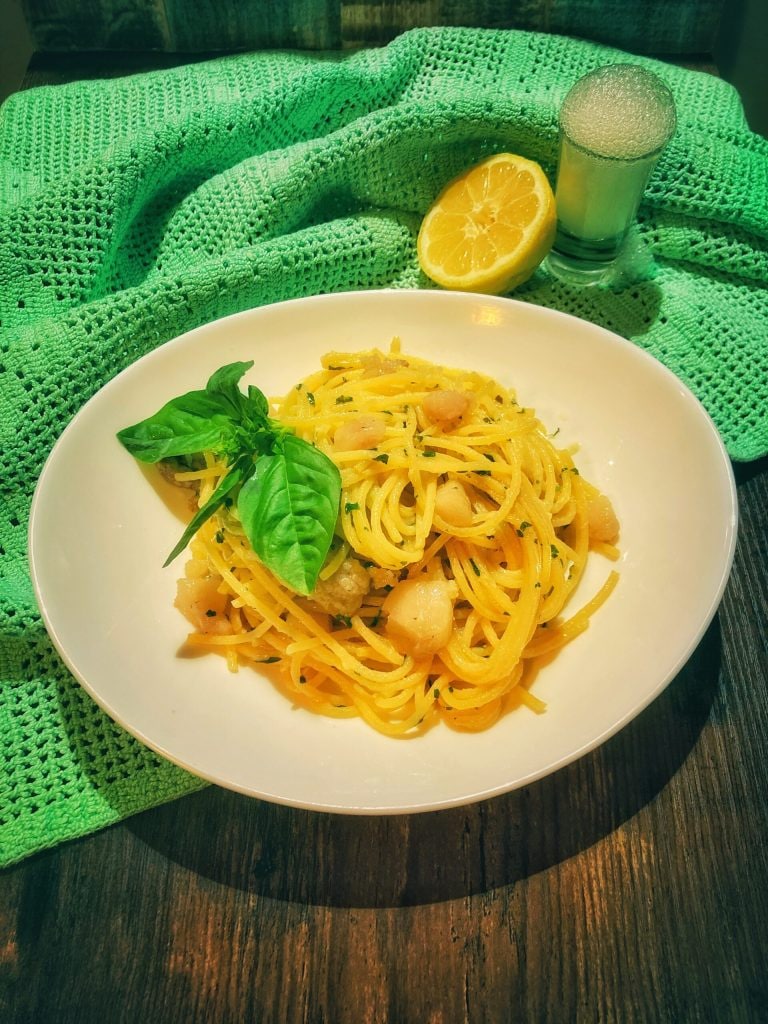Allardiata or lardiata pasta is a humble dish from the Neapolitan peasant tradition, so humble that it didn’t even include olive oil; lard, considered an almost waste product, was used instead, along with tomatoes, and sometimes not even that, for a white version like mine.
▶ The first step is to “tie” the lard (create a sort of cream-mash) with a pinch of chili pepper and some basil leaves.
▶ Usually, short pasta or broken ziti is used; I used corn and whole rice spaghetti for a gluten-free version.
🍋 If the dish seems a bit heavy… the advice is to finish with the famous OPEN-LEGGED LEMONADE: lemon juice, sparkling water, and a pinch of baking soda!

- Difficulty: Medium
- Cost: Very cheap
- Preparation time: 10 Minutes
- Portions: 4 people
- Cooking methods: Boiling, Stove
- Cuisine: Italian
- Seasonality: All seasons
Ingredients
- 14 oz corn spaghetti (or short pasta or broken ziti)
- 7 oz lard
- as needed basil
- as needed chili pepper
- 1 clove garlic
- 2.5 oz pecorino cheese
- as needed extra virgin olive oil
Steps
Chop the lard with basil and chili pepper.
In a pan, sauté the garlic in a little oil, add the lard mixture, and melt it until a sort of cream/mash is formed.
Cook the pasta al dente, mix it for a few minutes in the lard cream.
Serve with a sprinkle of pecorino cheese.

FAQ
What is the difference between Colonnata lard and Arnad lard?
Colonnata lard made the Tuscan locality from which it takes its name famous.
The quality of the lard depends on the choice of raw materials (from the quality of the “fresh fat,” which must be from a heavy pork, to the aromas with which it is rubbed) and the aging, which still today is done in marble tanks (conche) where the product remains for about 6 months.
Arnad lard PDO, typical of the lower Aosta Valley, unlike Colonnata’s, was aged in chestnut wood vats (doils) with special joints that did not let the brine out and is still flavored with aromas such as juniper, bay leaf, nutmeg, sage, cloves, cinnamon, yarrow.
Today glass vats are used.
It is obtained from the lard from pork shoulder (the animal weighing at least 352 lbs and no less than 9 months old), whose meat must be pinkish and blemish-free.
The weight varies from 10.5 oz to 8.8 lbs, the shape is a quadrangular slice.

